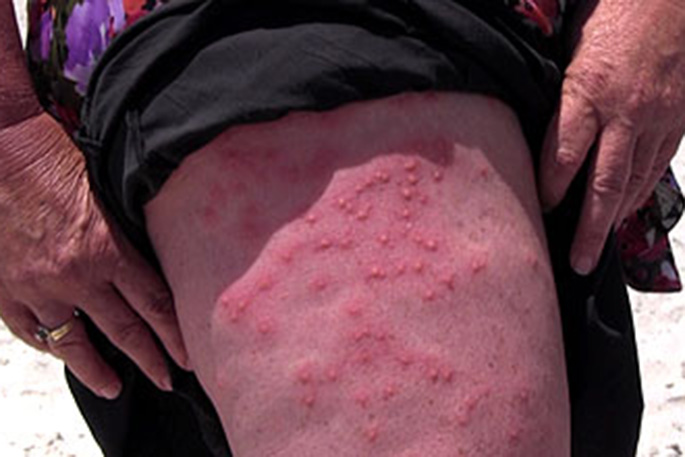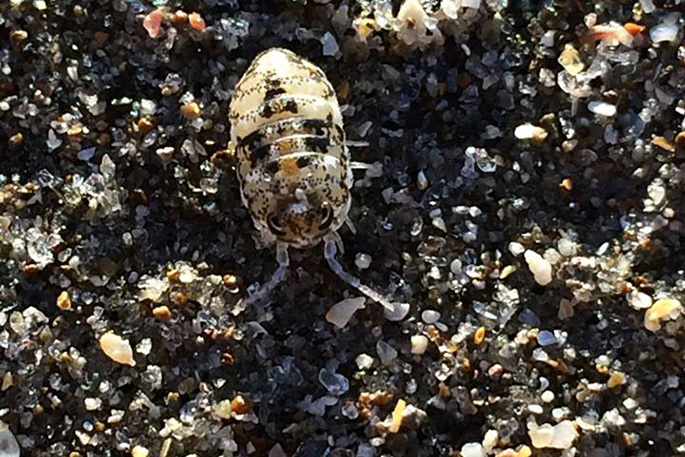The thought of it may leave your skin crawling, but one thing is for certain, it's the topic on everyone's mind when summer comes around.
The notorious creature nicknamed the ‘Mount mauler' has been spoiling beach days in the Bay of Plenty for many years, leaving tones of red swelling bites on many beach-goers limbs.
In the last week, SunLive has had in influx of readers chiming in to tell us the creature is back, but there's still some debate of what exactly the uninvited guest is.
One SunLive reader, who has been aware of the creature for the last 40 years says she has seen what she believes to be the Mount Mauler crawling along the soft sand.
'I've seen the little critters, they look like a little white maggot-looking worm and barrow under the skin, apparently laying an egg. The itch is unbelievable!”
A Papamoa resident also agrees that a worm-like creature is the culprit, known as a phycosecis limbata.
'The phycosecis limbata is the larval stage of a small fly, which also bites. The larva live in the dry sand but can easily skip across wet sand, burrow through towels and clothing and get caught in swimwear.
'The bite isn't felt at the time but it itches like crazy the next day or even the day after that, and can cause blisters and the bites, which can get badly infected.”
Another SunLive reader, however, says we're looking in the wrong direction - 'It's not an insect, it's jellyfish”.
'People who don't sit or lie in the sand still get this reaction too- it's from tiny jellyfish larvae in the water that get trapped between your clothing and your skin which is why the ‘bites' mainly appear on areas that were covered by rash tops or board shorts.”
Toi Ohomai marine studies tutor Dave Guccione says there are a few creatures out there that could be the culprit, but based on what people have said, he's whittled it down to two different creatures- a Hydrozoan and an Isopod.
'A Hydrozoan is kind of like a jellyfish, but more like an anemone and they have a platonic stage where they look most like a tiny jellyfish before they are dispersed,” says Dave.
They hunt and sting just like a jelly fish and are noticed more commonly when the offspring are dispersed during breeding seasons.
'When the conditions are right in the water they erupt in massive numbers, because the potential for their offspring to be successful is high, and there's a queue that there's a lot of food around.”
The other theory is that the Mount Mauler is actually isopod's which can live in the sea, fresh water or on land.
'They swim around and will bite your skin if you stand in one spot for quite a while. They look like little sand hoppers and probably are about 3mm long,” says Dave.
'In the surf zone, if these creatures are the culprit, then they may go unnoticed, but if you're in a creek you can actually see them swimming up to you and zooming around your leg.”
He says unless someone has a terrible reaction these creations are just an occasional bother and aren't going cause any danger.
To avoid being bitten by the Mount mauler, people are advised to stay below the high-tide mark, and spray themselves and their towels with insect repellent.
Dave suggests wearing something tight against your skin.
'The Mount Mauler isn't known to bite through fabric unless it gets inside a bathing suit, so wearing tight clothing will help.
 An extreme case of someone being bitten by the Mount Mauler.
An extreme case of someone being bitten by the Mount Mauler.



1 comment
Mount Mauler definitely an insect....
Posted on 10-01-2019 15:15 | By Bruja
The reason I know this is because I'm such a sook it is ALWAYS too cold for me to go swimming but I was bitten two days in a row, lying on the sand and these liitle translucent bugs where jumping around in the dry sand. I did not go near the water.
Leave a Comment
You must be logged in to make a comment.